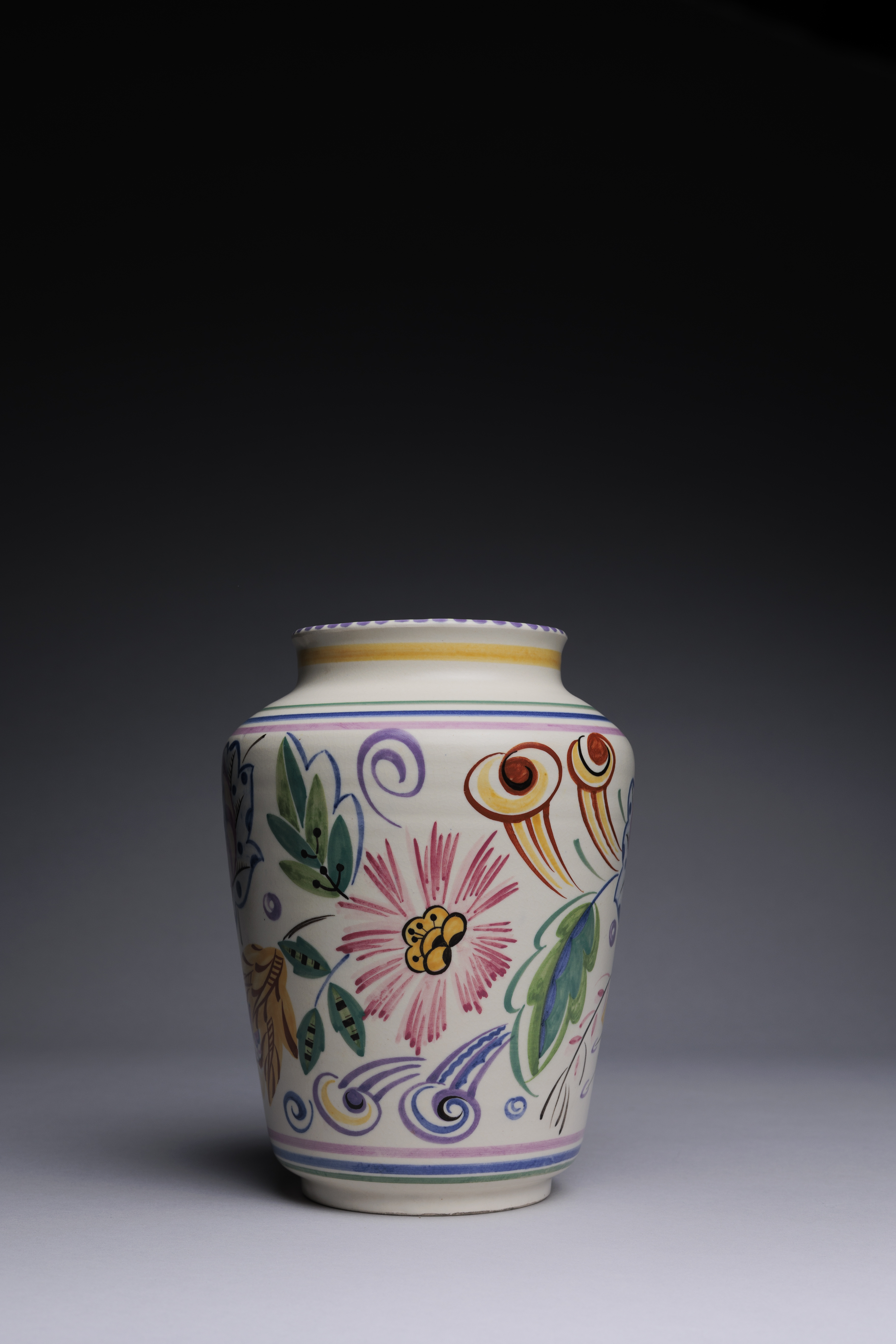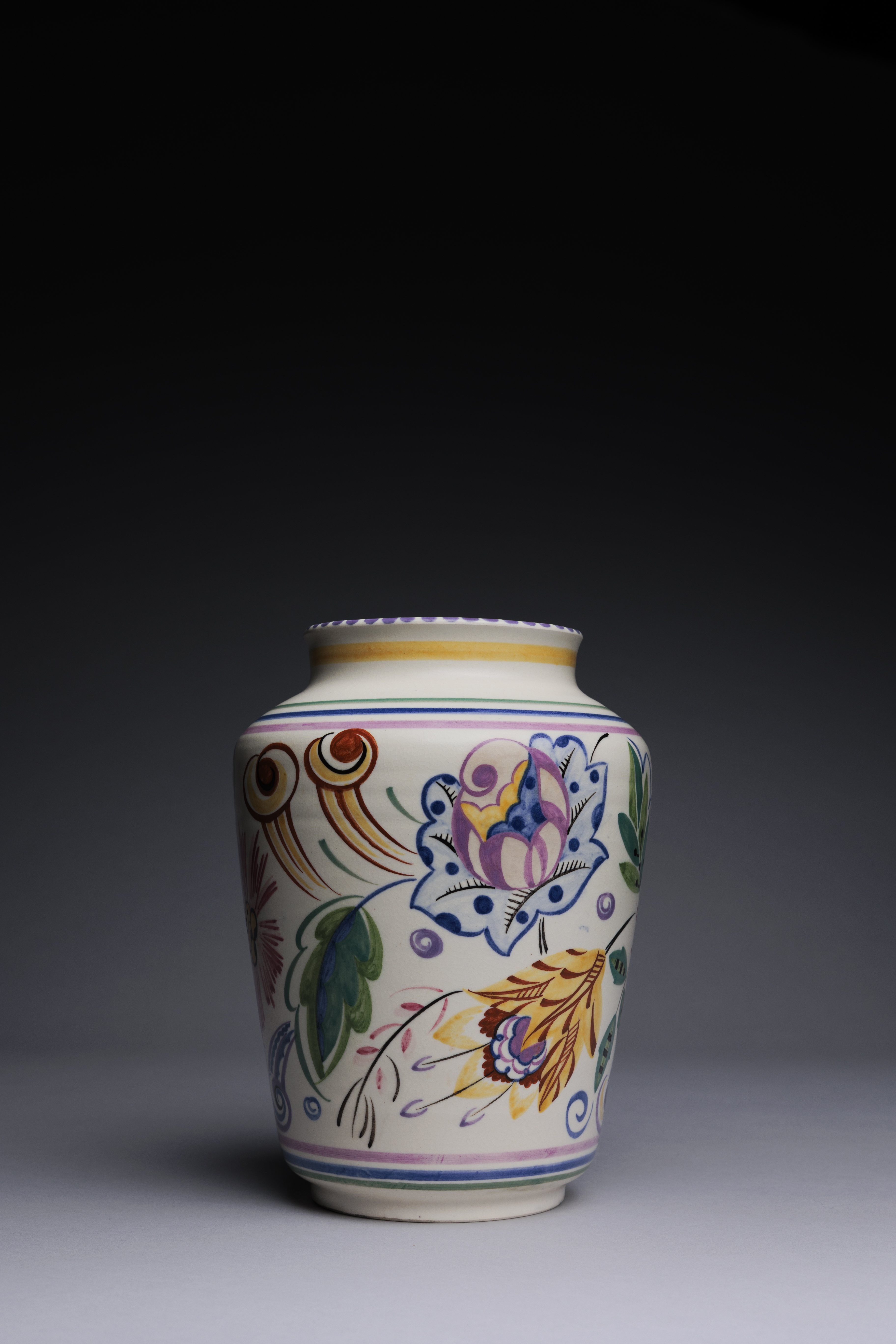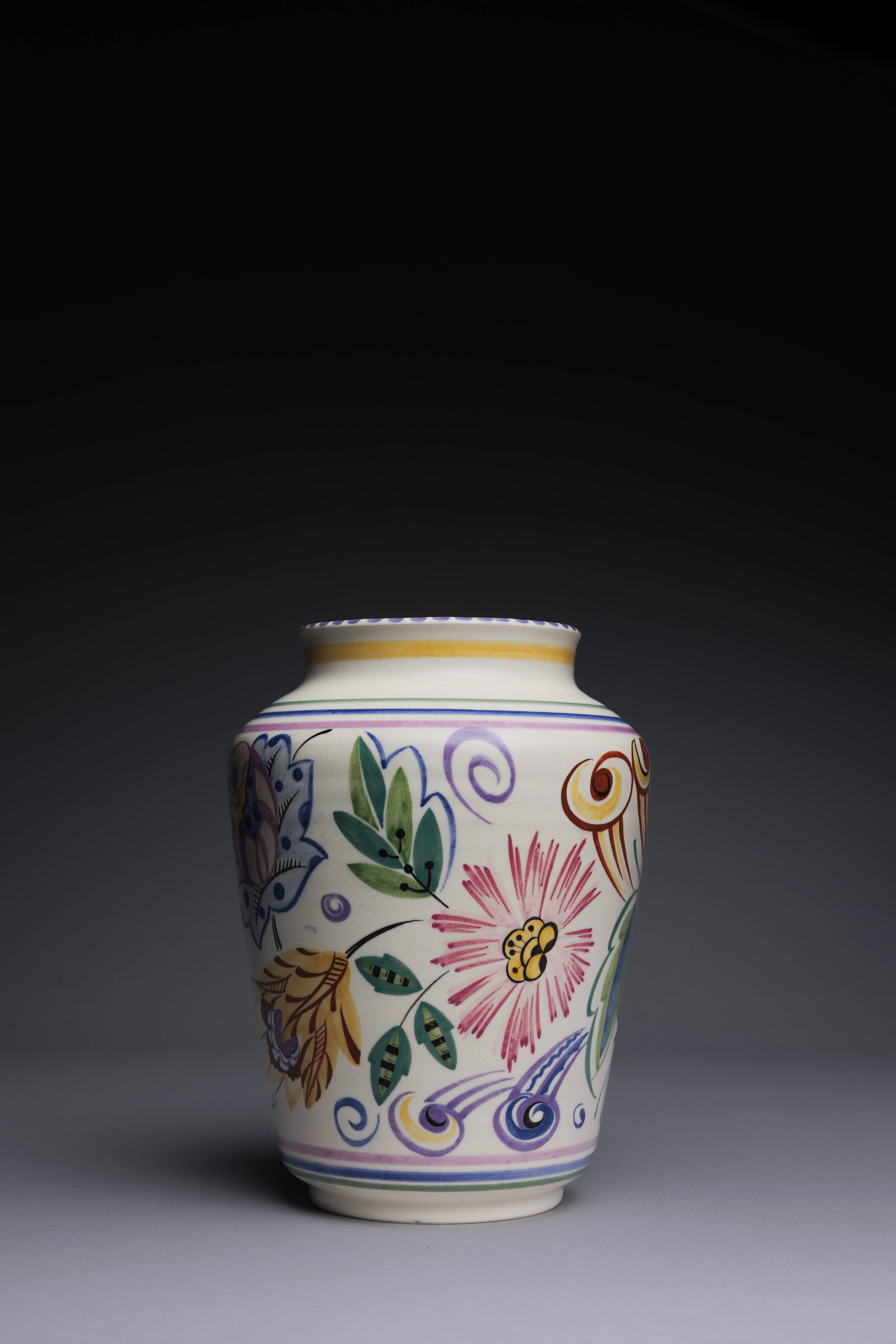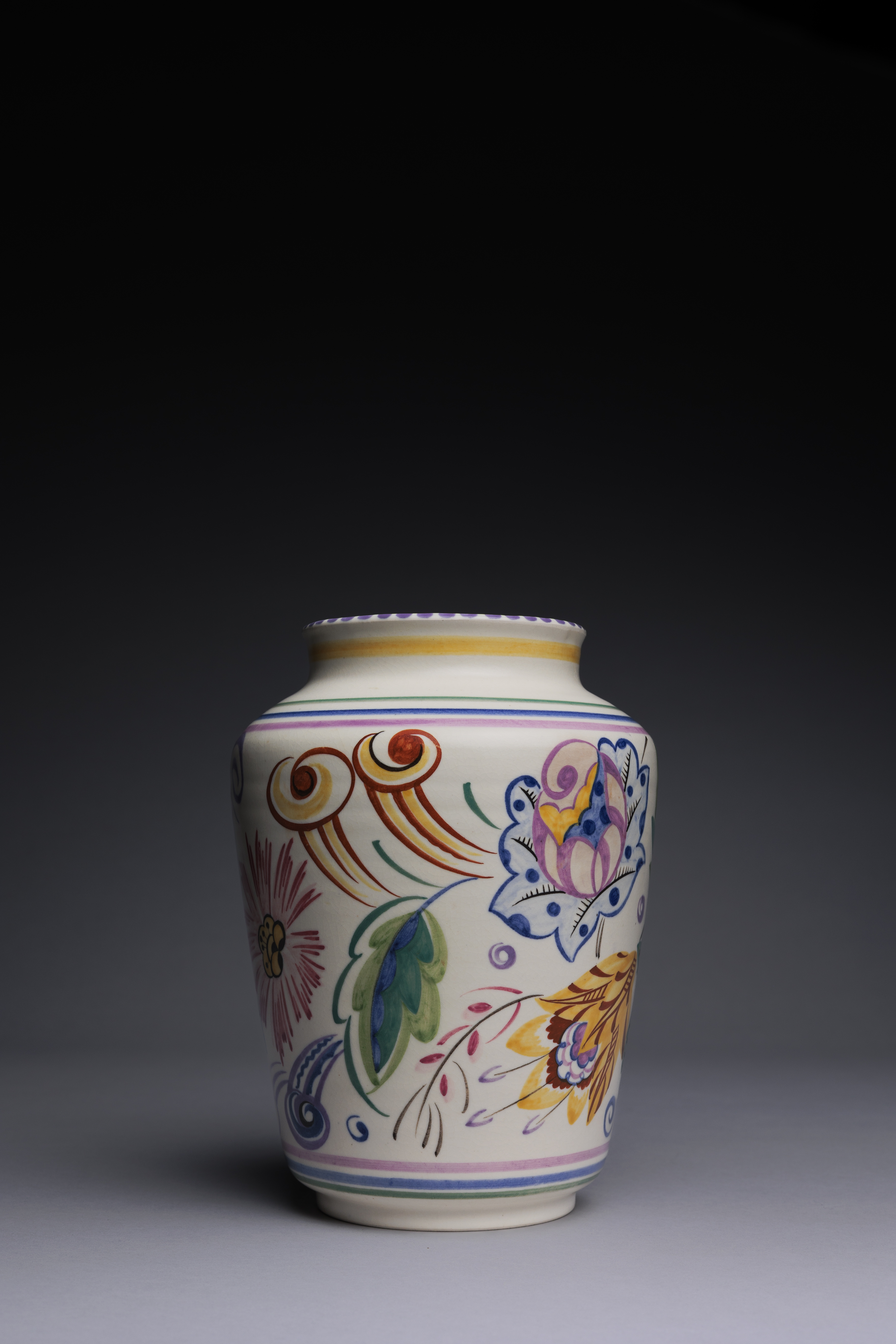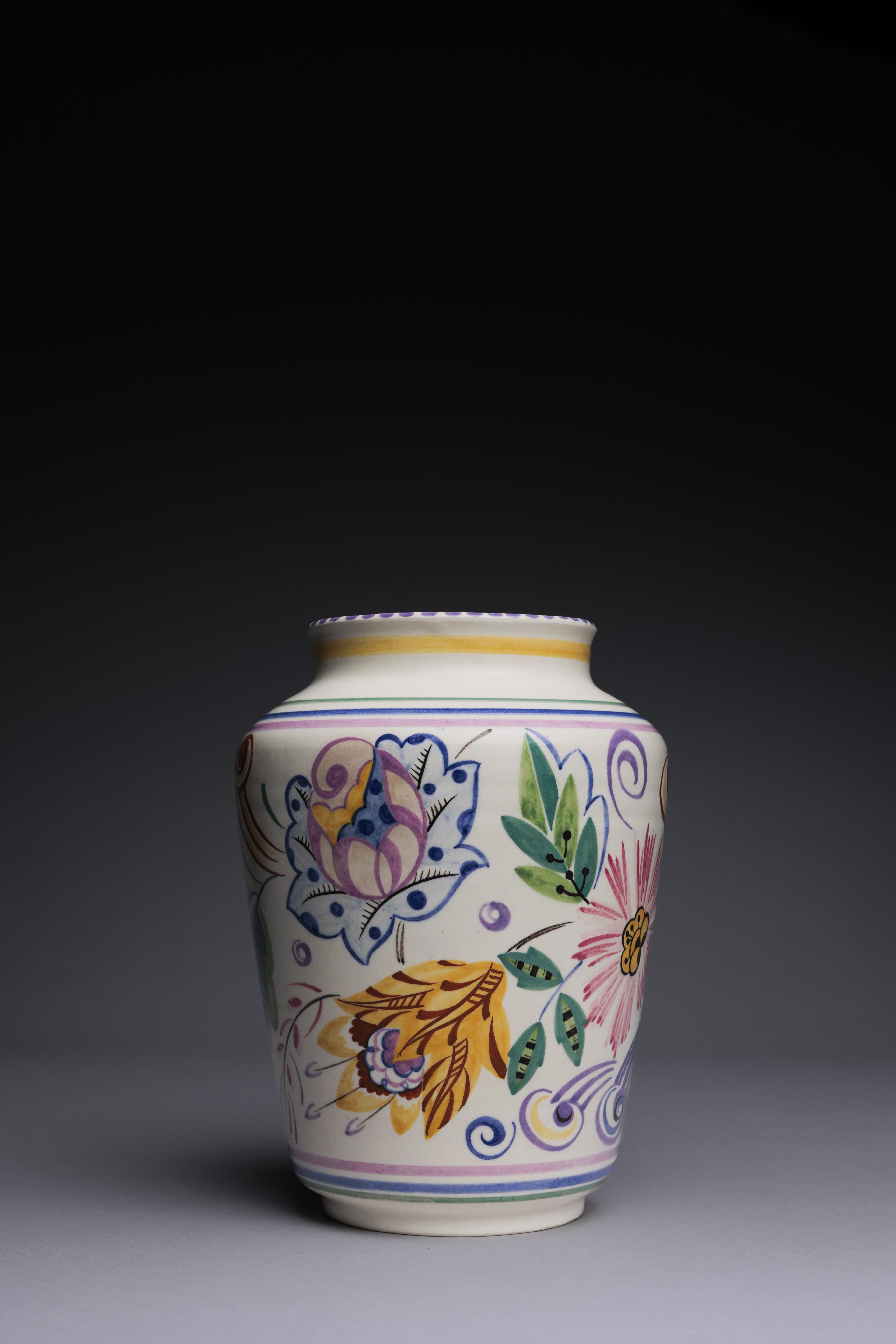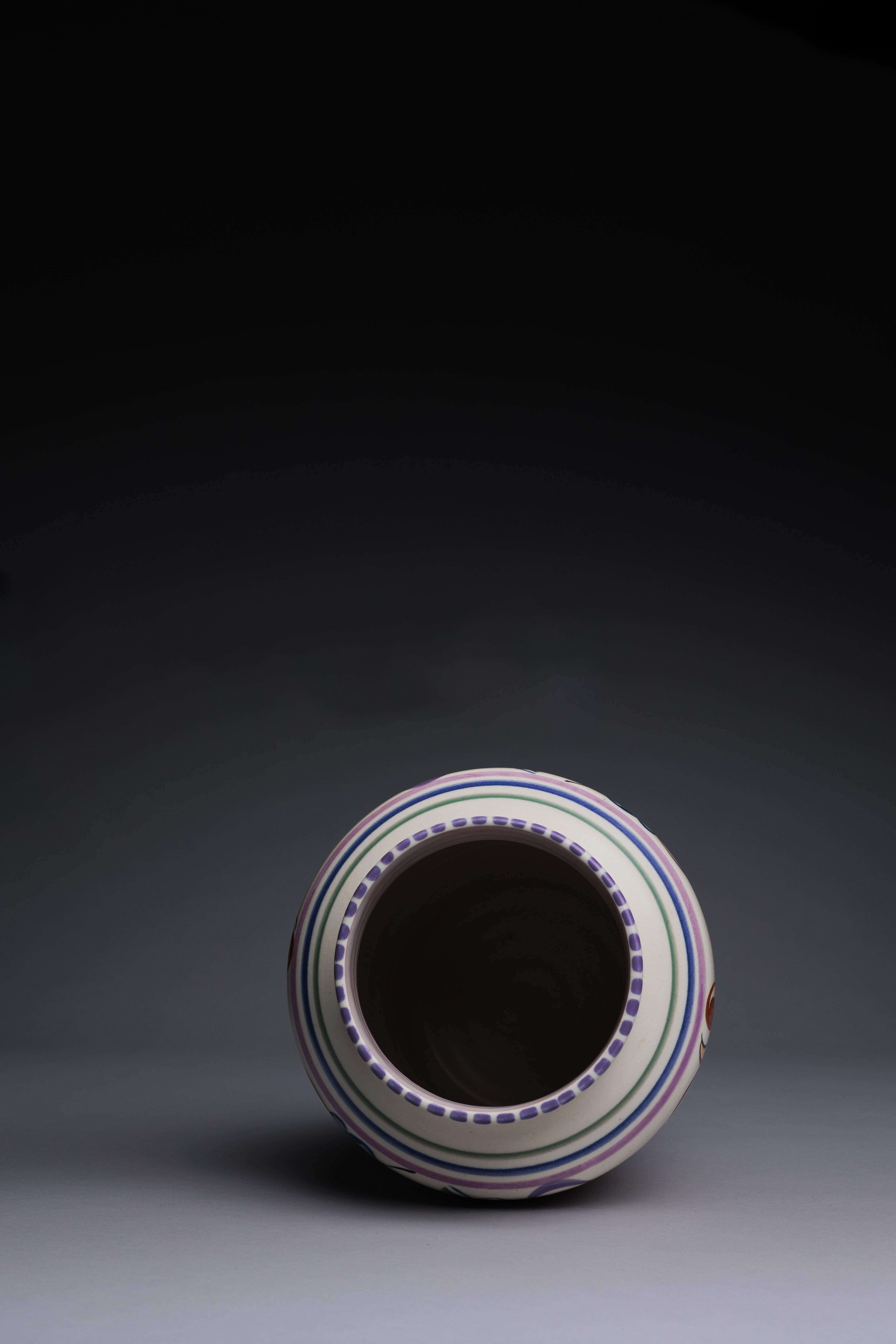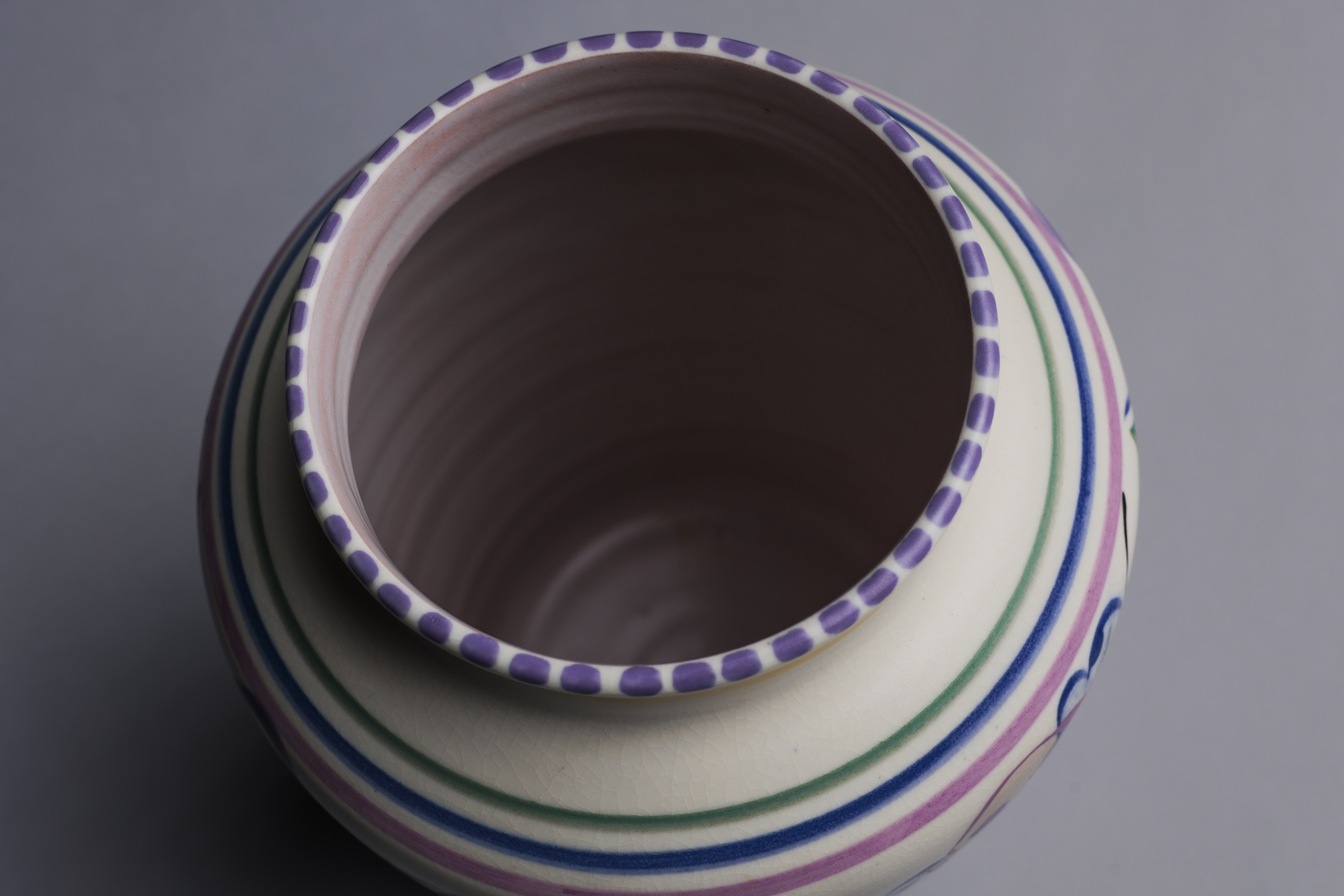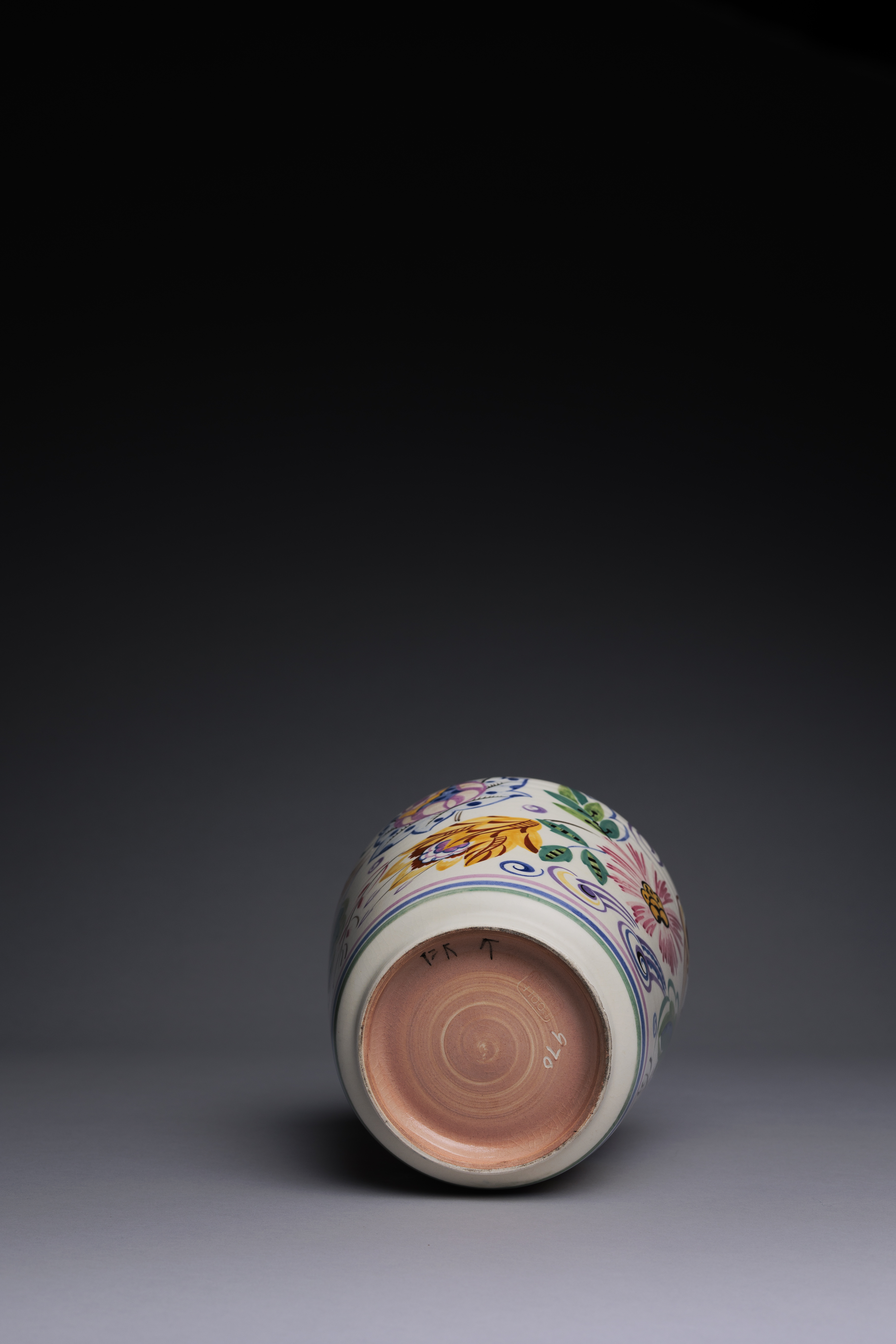The design of this Poole Pottery vase belongs to a relatively understudied figure in ceramics design history: Truda Carter. Working as lead designer at the firm for nearly 30 years, Carter was responsible for developing the Poole aesthetic. This vase represents the vibrant Modernist style for which she, and consequently Poole Pottery, was known.
The design of this Poole Pottery vase belongs to a relatively understudied figure in ceramics design history: Truda Carter. Working as lead designer at the firm for nearly 30 years, Carter was responsible for developing the Poole aesthetic. This vase represents the vibrant Modernist style for which she, and consequently Poole Pottery, was known.
Essay
The first half of the 20th century saw the emergence of more and more women as professional designers and artists. In the British ceramics industry, designers such as Daisy Makeig-Jones, Clarice Cliff, Susie Cooper, and Milicent Taplin were behind major factories’ most successful wares. At Poole Pottery in Dorset, lead designer Truda Carter introduced colorful Art Deco and Modernist designs such as those seen on this vase. Carter’s so-called ‘Traditional’ wares were extremely popular, their unique style becoming emblematic of the Poole Pottery aesthetic and earning Truda Carter a well-deserved place in ceramics design history.
Truda Carter, born Getrude Ethel Sharp, grew up in a middle-class family as the youngest daughter of famous entomologist David Sharp. While attending the Royal College of Art in London, she met and married ceramicist John Adams. Truda and John moved to South Africa soon after their marriage in 1915 to set up a pottery school at Durban Technical College, and it was during this period that Truda received her technical training in ceramics. The couple returned to England in 1921 to found a new chapter of Poole Pottery. Along with Cyril Carter and Harold Stabler, Truda and John Adams created the firm Carter, Stabler and Adams Ltd. Truda became the resident designer and was responsible for the majority of patterns (which came to be known as the ‘Traditional’ line) produced during the Pottery’s successful interwar period.
This Poole Pottery vase features Truda Carter’s RK pattern, which combines vibrant florals framed within geometric borders. The design is slightly more delicate than other Poole patterns, and the relative sparseness of the pattern allows the beautiful white earthenware to show through. Truda took inspiration for her designs from a variety of sources, including Dutch Gouda pottery, Jacobean embroidery, and French design books (pochoirs). Subtle Fauvist and Cubist influences seem apparent in her designs as well.
Truda may have hand-painted some vessels, but the majority of overglaze decoration at Poole was done by factory workers. Like many potteries of the 19th and early 20th centuries, Poole employed a factory of young women, known as paintresses, to paint designs on vessels. Here, like in most other factories, the actual throwing, casting, sculpting and firing was performed by men. Paintresses marked each piece that they worked on with their own special mark. The marks helped Poole to keep track of fulfilled quotas for payday, and today they identify the artists behind each piece. The present vase was painted by Marian Heath, identified by the arrow mark on the bottom. Unfortunately, information about these paintresses is scarce, however we know that they usually came from middle- and upper-middle class families and would often have attended art school (not unlike Truda’s own upbringing).
The present Poole Pottery vase can be dated between 1934-37: during this time the Pottery transitioned from using red clay to white earthenware as the factory clay pits were depleting. The white earthenware was covered with a pink slip (which can be seen on the underside of this vase), and the white body would be visible where any incised marks were made (here, the vase shape 970).
In the late 1920s Truda left her husband, marrying Cyril Carter in 1930. Truda, John, and Cyril all continued to work closely together at Poole up until Truda’s retirement in 1950. Despite the likely tense work environment, Truda continued to produce popular patterns for Poole. Indeed, it would not be a stretch to say that Truda created the Poole Pottery style: when many collectors think of Poole Pottery today it can be certain that they are picturing her vibrant Modern designs.
BT
Condition
Excellent. Some very fine crazing throughout.
For a detailed condition report, please contact us.
The first half of the 20th century saw the emergence of more and more women as professional designers and artists. In the British ceramics industry, designers such as Daisy Makeig-Jones, Clarice Cliff, Susie Cooper, and Milicent Taplin were behind major factories’ most successful wares. At Poole Pottery in Dorset, lead designer Truda Carter introduced colorful Art Deco and Modernist designs such as those seen on this vase. Carter’s so-called ‘Traditional’ wares were extremely popular, their unique style becoming emblematic of the Poole Pottery aesthetic and earning Truda Carter a well-deserved place in ceramics design history.
Truda Carter, born Getrude Ethel Sharp, grew up in a middle-class family as the youngest daughter of famous entomologist David Sharp. While attending the Royal College of Art in London, she met and married ceramicist John Adams. Truda and John moved to South Africa soon after their marriage in 1915 to set up a pottery school at Durban Technical College, and it was during this period that Truda received her technical training in ceramics. The couple returned to England in 1921 to found a new chapter of Poole Pottery. Along with Cyril Carter and Harold Stabler, Truda and John Adams created the firm Carter, Stabler and Adams Ltd. Truda became the resident designer and was responsible for the majority of patterns (which came to be known as the ‘Traditional’ line) produced during the Pottery’s successful interwar period.
This Poole Pottery vase features Truda Carter’s RK pattern, which combines vibrant florals framed within geometric borders. The design is slightly more delicate than other Poole patterns, and the relative sparseness of the pattern allows the beautiful white earthenware to show through. Truda took inspiration for her designs from a variety of sources, including Dutch Gouda pottery, Jacobean embroidery, and French design books (pochoirs). Subtle Fauvist and Cubist influences seem apparent in her designs as well.
Truda may have hand-painted some vessels, but the majority of overglaze decoration at Poole was done by factory workers. Like many potteries of the 19th and early 20th centuries, Poole employed a factory of young women, known as paintresses, to paint designs on vessels. Here, like in most other factories, the actual throwing, casting, sculpting and firing was performed by men. Paintresses marked each piece that they worked on with their own special mark. The marks helped Poole to keep track of fulfilled quotas for payday, and today they identify the artists behind each piece. The present vase was painted by Marian Heath, identified by the arrow mark on the bottom. Unfortunately, information about these paintresses is scarce, however we know that they usually came from middle- and upper-middle class families and would often have attended art school (not unlike Truda’s own upbringing).
The present Poole Pottery vase can be dated between 1934-37: during this time the Pottery transitioned from using red clay to white earthenware as the factory clay pits were depleting. The white earthenware was covered with a pink slip (which can be seen on the underside of this vase), and the white body would be visible where any incised marks were made (here, the vase shape 970).
In the late 1920s Truda left her husband, marrying Cyril Carter in 1930. Truda, John, and Cyril all continued to work closely together at Poole up until Truda’s retirement in 1950. Despite the likely tense work environment, Truda continued to produce popular patterns for Poole. Indeed, it would not be a stretch to say that Truda created the Poole Pottery style: when many collectors think of Poole Pottery today it can be certain that they are picturing her vibrant Modern designs.
BT
Excellent. Some very fine crazing throughout.
For a detailed condition report, please contact us.
This item ships free to the continental US, and globally for a flat-rate fee of $75.
All objects are packed with utmost care by our team of expert fine art shippers. All items are shipped with parcel insurance.
For more information on our shipping policies, please visit our FAQ Page.

